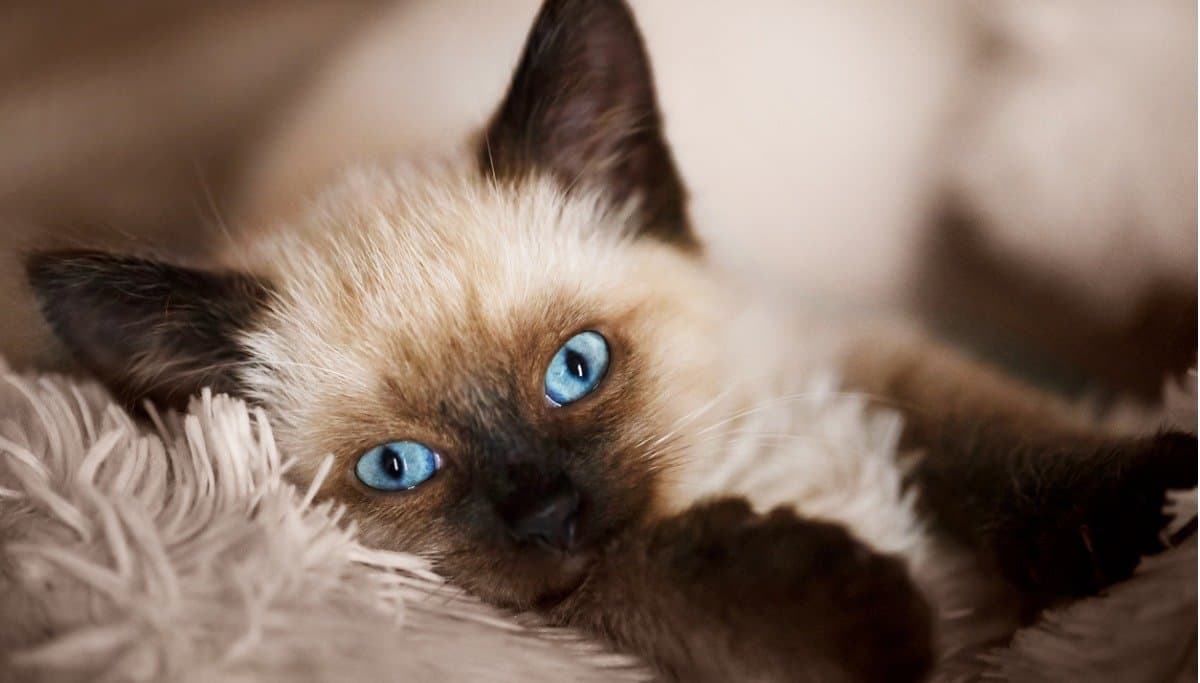Did you know there are over 70 different cat breeds? That’s quite a variety of feline friends, but which of them tend to live the longest?
Some of the longest-living cat breeds include the Balinese, Siamese, Russian Blue, American Shorthair, and Burmese. Interestingly, many of the oldest cats on record have been mixed-breed cats, too.
On average, cats live for about 12 to 14 years, but it’s not unusual for cats of any breed to reach their twenties. With advances in veterinary care and pet nutrition, it’s possible that our feline companions could live even longer in the future.
In this article, we’ll explore the lifespans of both purebred and domestic cats, highlight 12 breeds with the longest lifespans, and offer tips on how to help your cat live its healthiest, longest life.
Do Purebred Cats Live Longer?

It turns out that mixed-breed cats tend to live longer than purebred ones! A survey from the UK revealed that mixed-breed cats had an average lifespan of 14 years, while purebred cats averaged 12.5 years.
The study surveyed over 4,000 cats, but only 8.3% of them were purebreds, so the sample size for purebred cats was relatively small. Additionally, the lifespan of purebred cats varied greatly depending on the breed. Since similar studies haven’t been done in the US, we don’t know if American cats have different lifespans.
12 Cat Breeds with the Longest Lifespans
-
Balinese

Balinese cats can live anywhere from 18 to 22 years on average. They share many similarities with Siamese cats, both in appearance and personality, but with longer fur. However, they are prone to eye issues, just like their Siamese relatives. -
Siamese

Siamese cats often live around 15 to 20 years, with some reaching even older ages. For instance, one Siamese named Scooter lived to 30 years! These chatty, intelligent cats may face health issues like asthma, liver conditions, and retinal problems. -
Russian Blue

Russian Blues typically live about 18 years. These dignified cats are known for their calm demeanor and beautiful silvery-gray coats. -
American Shorthair

With lifespans of 15 to 20 years, American Shorthairs are sturdy cats, but they can be prone to heart issues and hip dysplasia. These purebreds are often confused with domestic shorthairs, which aren’t a specific breed but rather a category of short-haired cats. -
Burmese

Burmese cats live between 16 and 18 years on average, though some have been known to live well into their twenties. One cat was rumored to have lived to 35, but there’s no official record. They may be susceptible to diabetes and low potassium levels. -
Bombay

Bombays generally live 13 to 17 years. These affectionate, adaptable cats are known for their striking black coats. However, they may struggle with respiratory issues and heart disease due to their short snouts. -
Manx

Manx cats have an average lifespan of 14 years. They are known for being tailless and round-faced, but they can face spinal issues, including arthritis and incontinence. -
Persian

Persians live around 13.5 years on average. These long-haired cats are prone to breathing issues and dental disease. Their flat faces have made them quite iconic, and many people associate them with the famous Garfield! -
Egyptian Mau

Egyptian Maus live for 12 to 16 years. They are known for their spots and remarkable speed, running up to 30 miles per hour. These cats are prone to heart disease and asthma and may face complications during birth. -
Oriental Shorthair

With an average lifespan of 12 to 15 years, Oriental Shorthairs are playful cats with large ears and elongated snouts. They may experience health issues like digestive problems and diabetes. -
Ragdoll

Ragdolls typically live for 12 to 15 years. They’re famous for their relaxed, affectionate nature and large size, with males reaching up to 20 pounds. They are more likely to develop hypertrophic cardiomyopathy, so regular heart screening is recommended. -
Savannah

Savannah cats, which are hybrids of servals and domestic cats, live 12 to 15 years on average. These exotic cats are highly energetic and may have behavioral challenges. They require special care, and in some states, they’re illegal to own.
Tips to Help Your Cat Live Longer
Keep Them Indoors
Outdoor cats generally live only 3 to 7 years, while indoor cats can live 10 to 20 years. Outdoor dangers like diseases, parasites, traffic, predators, and even malicious people can shorten a cat’s lifespan.
Offer Supervised Outdoor Time
If you want your cat to enjoy the outdoors safely, consider using a “catio” (an enclosed outdoor space) or a harness and leash for walks. This way, your cat can explore while staying protected from harm.
Feed a Balanced Diet
Nutrition plays a crucial role in a cat’s health. Ensure your cat has a balanced, veterinarian-approved diet, and keep their weight in check. Obesity can significantly shorten a cat’s lifespan, while a healthy weight improves their chances of living a long life.
Play with Them Daily
Cats need daily exercise to stay healthy. Spend 10 to 15 minutes playing with your cat at least two to three times a day to keep them active and mentally stimulated.
Adopt Two or More Cats
Cats are social creatures, and having companions can help keep them active and happy. Multiple cats often provide each other with entertainment and emotional support.
Choose a Reputable Breeder
If you’re considering purchasing a purebred cat, make sure you’re working with a responsible breeder. A breeder who performs genetic testing and cares for the health of their cats can help ensure your cat has the best chance for a long life.
See the Vet Regularly
Regular vet check-ups are essential for keeping your cat healthy. Annual wellness exams for younger cats and bi-annual visits for older cats help catch issues early and ensure your cat gets the necessary care.
